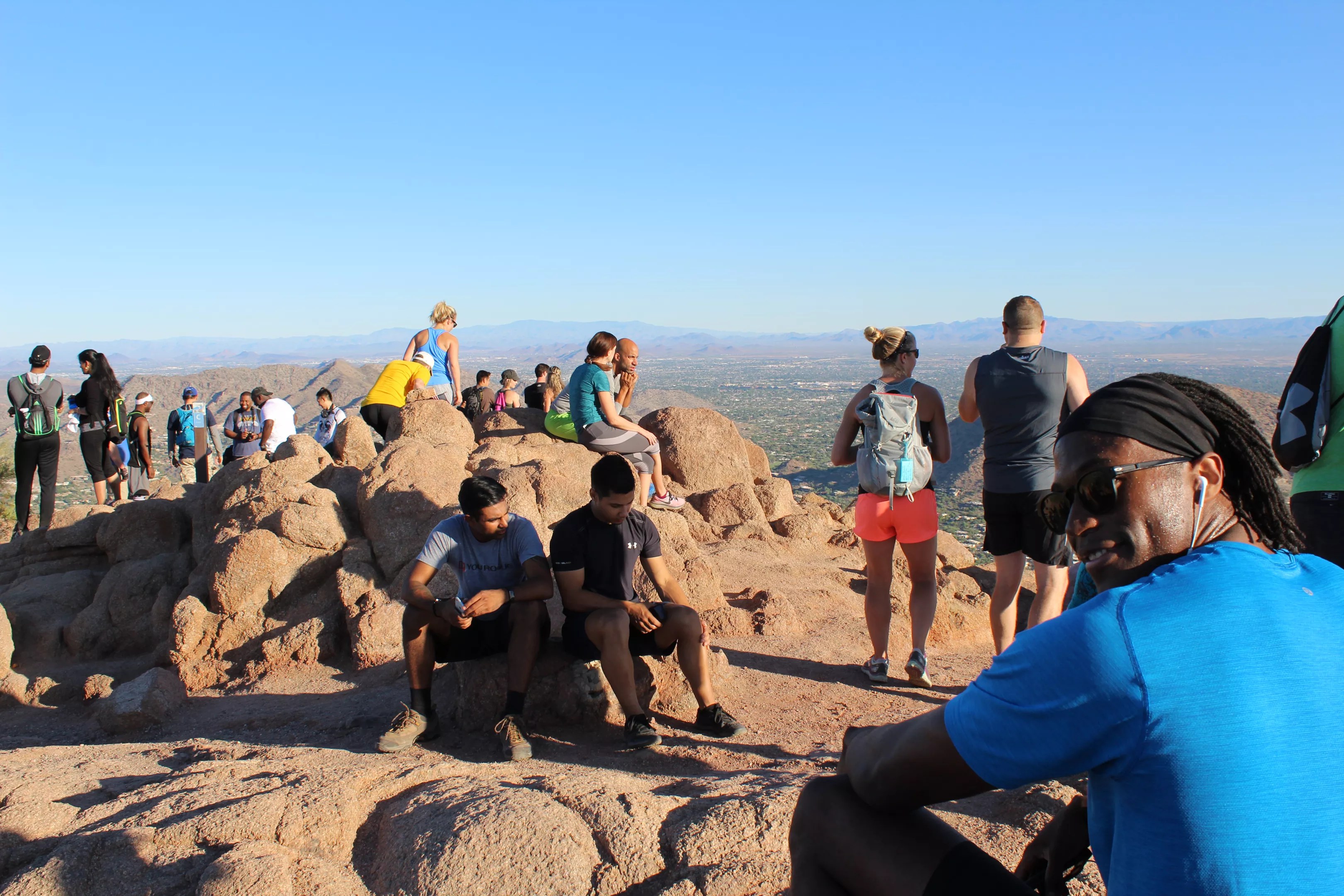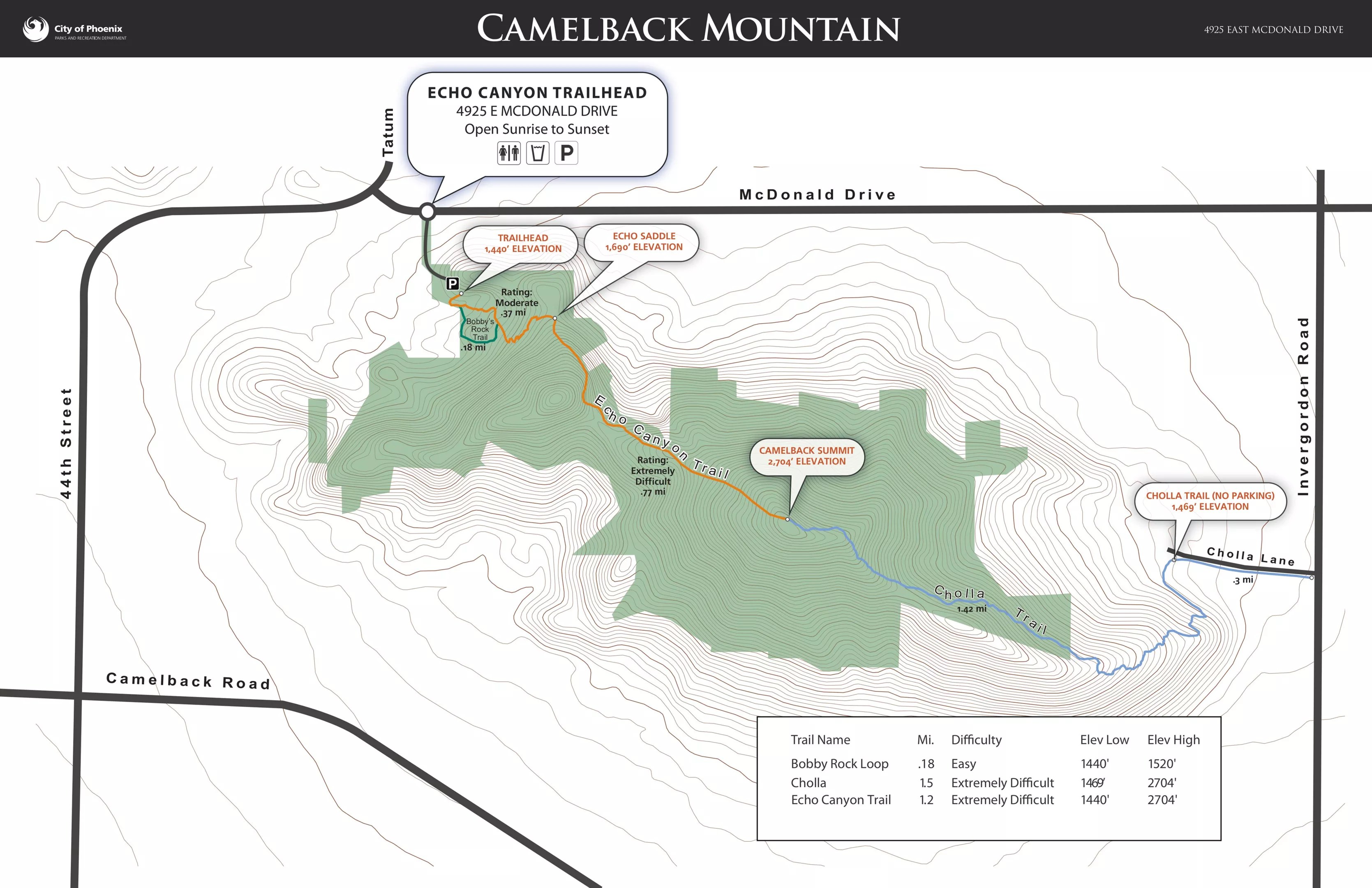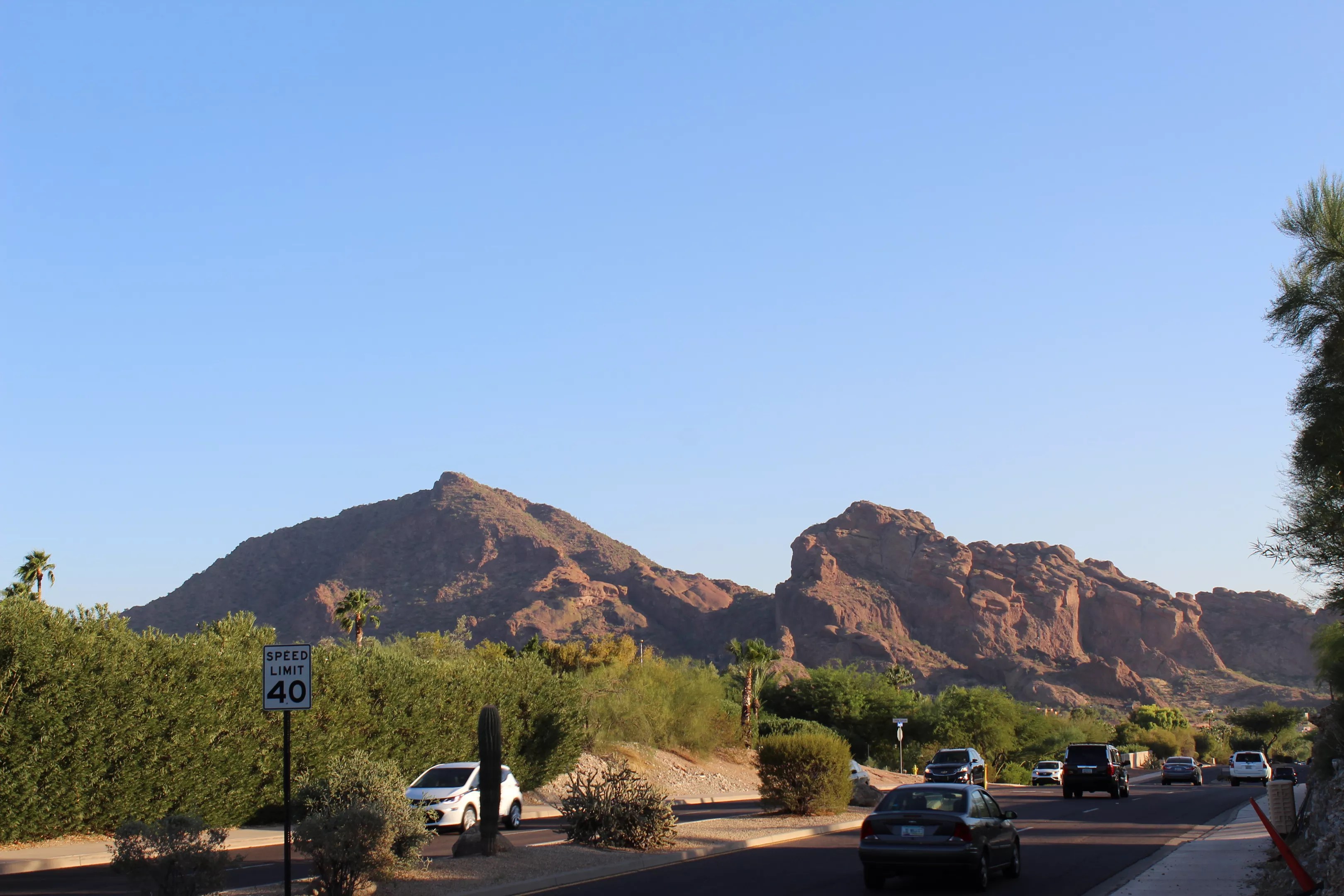
Ray Stern

Audio By Carbonatix
Camelback Mountain is one of Phoenix’s most iconic hikes, offering breathtaking views of the city and surrounding desert landscape. However, don’t let its popularity fool you; neither of Camelback’s two trails is an easy stroll. Whether you’re a seasoned hiker or just looking for a challenge, proper preparation is key.
Jon Mincks, a wilderness skills and safety expert at Arizona Hiking Shack, emphasizes that Camelback, which stands at about 2,700 feet, is no neighborhood park. “It’s a desert mountain, not a playground,” he says. This is important for hikers to understand, as the hike requires more than just a pair of tennis shoes and a good attitude. The mountain’s rugged terrain and Arizona’s harsh climate mean you must prepare for a serious adventure.
Mincks often reiterates a piece of wisdom that resonates with many hikers: “Getting to the top is optional, but getting down is mandatory.” This saying is especially critical during the summer months when the heat can be dangerous. According to Mincks, while it’s nice and cool in Phoenix during the “off-season,” the dry air and intense sun can still take a toll on your body.
“Even if it’s cool outside, hiking is still very demanding, and if you’re not prepared with enough water, you’re setting yourself up for a tough time,” he explains.
In addition to staying hydrated, Mincks stresses the importance of having the right gear. “Good shoes make a huge difference. Your feet are going to take a beating on the rocky trail, so make sure you’re wearing shoes that provide both support and traction.”
Another must-have is a map or guide: “Situational awareness is key. It’s easy to lose track of where you are, especially when you’re on a steep incline or surrounded by desert terrain,” he says.
Planning to take on Camelback or explore one of the many other desert trails? Here’s what you need to know.
1. Which trail to pick
Camelback Mountain has two main trails: Echo Canyon and Cholla. Echo Canyon (about 1.2 miles) is a steeper, shorter and more strenuous trek, portions of which include scrambling up rocky terrain. Cholla is longer (about 1.5 miles) but less steep. And if these options sound simple, you can always “break the camel’s back,” which is when you complete both trails in one hike.

Phoenix Parks and Recreation
2. Starting Time
The best time to hike is early morning for incredible morning views or late afternoon for beautiful sunsets. Whatever time you set out, remember that there is limited shade on the trails.
3. Parking
Parking is, frankly, a nightmare. There’s no official parking lot at Cholla and the small parking lot at Echo Canyon fills up fast. There’s limited street parking, but the residents hate it. Your best bet is to find a retail parking lot nearby and take an Uber or Lyft.
4. Hydration
Camelback is a dry desert environment, and dehydration is a risk factor. At least two liters of water per person is recommended. Seriously. Don’t mess around with this one.
5. What to Wear
Comfortable, sturdy shoes (preferably hiking boots or trail runners) are essential due to rocky and sometimes slippery terrain. Also wear a hat, sunscreen and lightweight, moisture-wicking clothing to protect yourself from the sun.

Camelback Mountain is one of the city’s most iconic landmarks.
Ray Stern
6. Trail Safety
Stay on the trail. The path can be narrow and rocky in some sections, so it’s important to stay on the marked trail at all times. There are no guardrails, and some areas can be dangerous for those not paying attention. It’s easy to get overheated, so if you start to feel dizzy, tired or overheated, turn back.
7. Respect the Elements
Camelback is part of a protected area, so avoid disturbing wildlife like desert reptiles or birds, stick to the trail and clean up anything you bring.